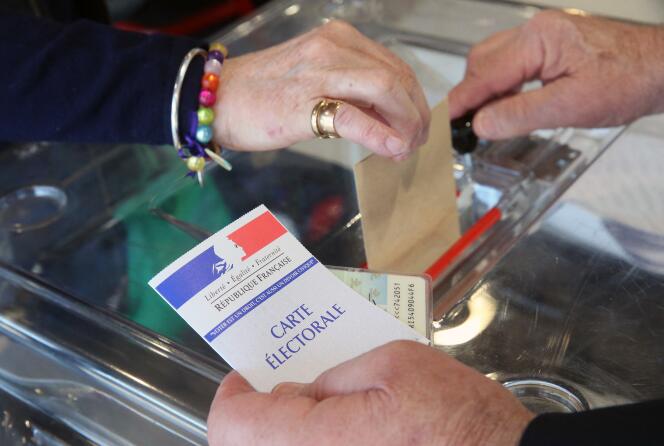Superprofits: How does a Common Initiative Referendum work?


The New People’s Environmental and Social Union (Nupes) presented to the Assembly on Wednesday, September 21, a draft law on the taxation of super profits of large companies and an attempt to obtain a common initiative referendum on the subject. A difficult procedure that has not been successful to date.
How does RIP work?
The Common Initiative Referendum, or RIP, was introduced during the 2008 parliamentary revision, but the organic law allowing its use only entered into force in 2015. Before that, only the President of the Republic, with the proposal of the Government or two Assemblies. , could organize a referendum.
Henceforth, Article 11 of the Constitution indicates that this electoral consultation can begin “A fifth of the members of the Parliament, supported by a tenth of the voters registered in the electoral rolls”or at least 185 deputies or senators out of a total of 925. In this case, the first secretary of the Socialist Party, Olivier Foret, clarified that the text on super profits was supported by 240 parliamentarians.
What are the next steps?
The Constitutional Council had one month to review the referendum proposal and possibly approve it, which it did on Thursday, May 9 with regard to the ADP. He had to check:
- That the subject of the referendum is indeed one of the subjects provided for by the constitution: it should concern “Organization of public authority, on reforms relating to the economic or social policy of the nation and public services which promote it, or tend to authorize the ratification of the treaty” ;
- that he does not have “In order to repeal the legislative provision published one year ago.” The RIP cannot be used to undo what Parliament has just voted for. However, to assess the validity of the RIP request, the date of registration of the referendum initiative, according to the decision of the Constitutional Council No. 2013-681 DC of December 5, 2013, should be taken into account. It was therefore necessary to check that the proposal against the privatization of ADP did not violate this rule. At the moment, the law has been solemnly adopted, but has not been published.
Then, within nine months, it will be necessary to gather the support of one-tenth of the voters. Although INSEE had 48.8 million registered voters in March 2022, this means it will need to collect around 5 million signatures. To be eligible, each supporter must complete a form indicating their name, address and ID number. The collection can be done by going to the website of the Ministry of Internal Affairs or at least one “access point” which will be in each canton area.
Even if all the signatures of parliamentarians and citizens are collected, the President of the Republic is required to call a referendum, but under one condition: no text of the National Assembly or the Senate on the same subject shall be discussed within six months. .
What are the precedents?
The referendum mechanism has been activated only once since its introduction in 2015. The RIP proposal was launched in 2019 against the privatization of Paris Aéroports. After nine months of collecting, it obtained only 1.1 million citizens’ signatures, which was far from the threshold required to hold a referendum. However, the privatization project has been delayed indefinitely, not because of this procedure, but because of difficulties in the aviation sector related to the Covid crisis.
In June 2020, the Constitutional Council produced a critical assessment of the RIP, which discussed the procedure “Compelling and hard to read”. He particularly criticized the difficulty of using a dedicated website and the humiliating aspect of reaching such a large number, and suggested that in the future a public information campaign or the creation of conditions for debate be carried out.
What other forms of referendum exist in France?
In France, referendums have so far always been initiated by the executive at the national or local level. Then there are two types of voting: “Local decision-making referendum”On issues within the competence of the local government (for example, changing the name of the population, introducing video surveillance in the municipality, etc.), the result of which becomes valid only if more than half of the voters participated. Participation in voting and local environmental consultations. This is the form chosen for Loire-Atlantique residents to vote at Notre-Dame-des-Landes airport. But unlike the referendum, it only “advisory”. Thus, the airport project, although approved by the ballot box, was abandoned by the government.
The current RIP is the closest form to an initiative referendum “citizen” Claimed since November 2018 “Yellow Vests”. But they asked that the signature threshold be lower, between 700,000 and 1.5 million votes. Other proposals for direct democracy arose from their reflections, such as lotteries or more open voting systems.
In the run-up to the big national debate in 2019, most political groups in the Assembly and Senate have proposed lowering the 5 million signature threshold.
Source: Le Monde
Leave a Reply